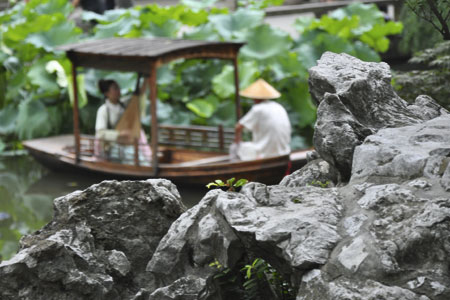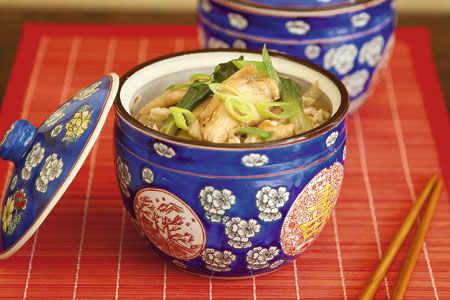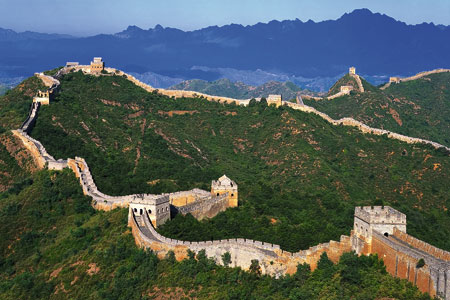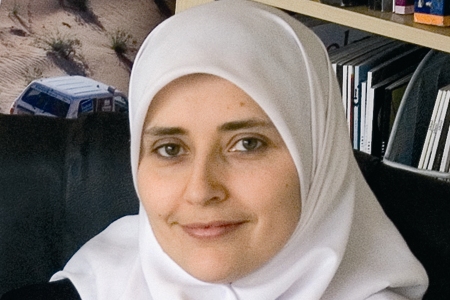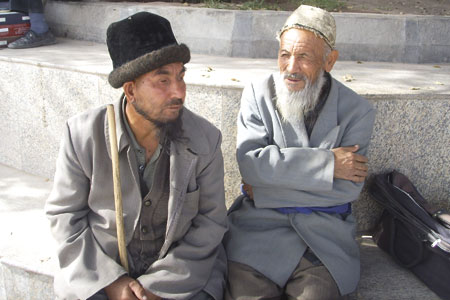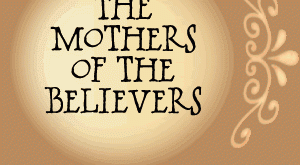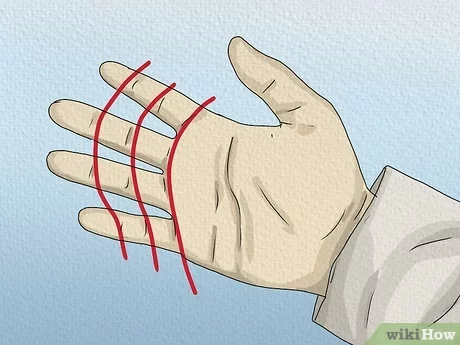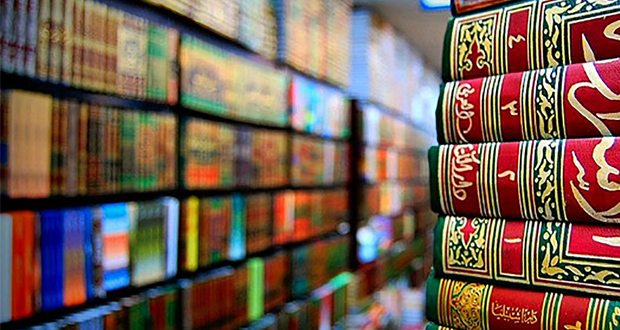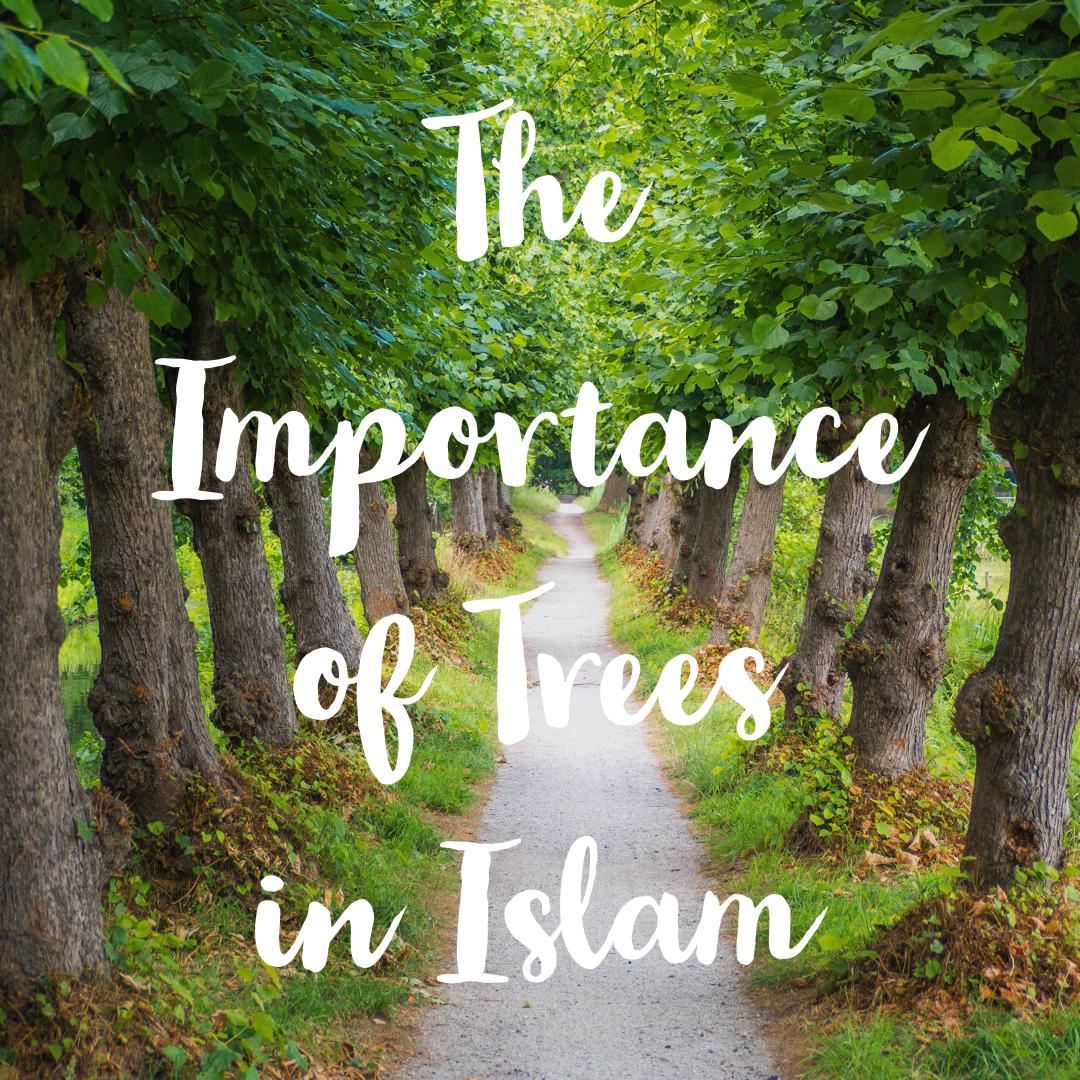 Muslim China boasts a population of 20 million. From the Hui to the Uyghurs, Islam in China is distinctive and diverse – intertwining authentic Chinese culture, with Islamic practice.
Muslim China boasts a population of 20 million. From the Hui to the Uyghurs, Islam in China is distinctive and diverse – intertwining authentic Chinese culture, with Islamic practice.
I get into a rickshaw in Beijing and my 65 year old wrinkled driver immediately whizzes me through the hutongs – old, narrow alleyways. He looks at me and talks in Chinese. I turn to my guide. “He’s asking where you are from.” “Aygee,” I reply in my broken Chinese – Egypt. He points at my headscarf, “Are you Hindu?” “No, Muslim.” He smiles and points to himself, “Moosleeman.”
For many people it comes as a shock to learn that officially there are at least 20 million Muslims in China, that’s a third of the UK’s total population. Unofficially, the number is even higher, some saying 65.3m and even 100m Muslims in China – up to 7.5% of the population.
Regardless of the real figure, the reality is that Islam in China is almost as old as the revelation of Islam to the Prophet Muhammad. Twenty years after the Prophet’s death, diplomatic relations were established in China by the Caliph Uthman. Trade was followed by settlement, until eighty years after the hijrah pagoda style mosques appeared in China. A century later, in 755, it became common for Chinese emperors to employ Muslim soldiers in their armies and also as government officials.
Today, the population of China includes 56 ethnic groups, 10 of which are Muslim. Out of these 10 minority groups, the Hui (short for Huizhou) are the largest group at 9.8m, making up 48% of China’s Muslim population. The second largest group is the Uyghurs at 8.4m, or 41% of the Chinese Muslim population. The Hui speak Chinese, unlike the Uyghurs and five other Muslim ethnic groups which speak Turkic languages. Overwhelmingly Sunni in belief and practice, the Hui are ethnically and culturally Chinese, virtually indistinguishable from the Han, who make up China’s billion-strong community. If my rickshaw driver hadn’t told me he was Muslim, I would have never guessed.
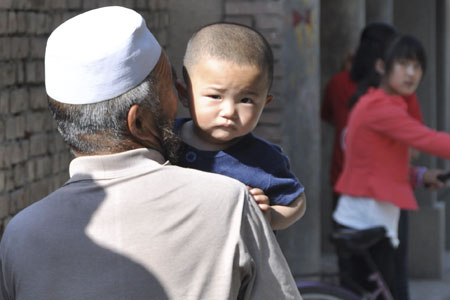
For over a millennium, and across five major imperial dynasties the Hui have lived in China peacefully, spread in every province and contributing to every aspect of Chinese life, from the military and the economy to the arts and sciences. Thriving in a non-Muslim civilisation, the Hui managed to create an indigenous Islamic culture that is uniquely and simultaneously Chinese and Muslim. Their experience, as Dru Gladney, author of Dislocating China puts it, is a “standing refutation of Samuel Huntington’s clash of civilisations.” No identity crisis whatsoever.
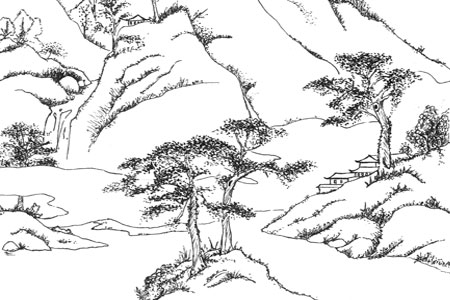
1,400 years of History
Muslims in China began as traders and soldiers in the seventh century, therefore instilling in the early Muslim settlers a sense of belonging and legitimacy; they were not a burden on the country, but valuable contributors. It was only in the thirteenth century however, after the Mongols conquered China, that these Muslims who were classified as ‘foreign guests’ were allowed to live wherever they chose and granted citizenship. This started the development of a fully indigenous Chinese Muslim culture. The Mongols, a minority themselves, encouraged Muslim migration to China, and forcibly relocated millions of Muslim immigrants, employing them as government officials and dispersing them throughout China. In the Ming dynasty Hui became the standard title for Chinese Muslims, and they flourished.
Centuries later, during the Manchurian (Qing) dynasty in 1780, communal violence between the Han and Hui began, and continued for 150 years. It began with the Manchurian’s discriminatory policies towards the Muslims: forbidding them from building mosques or slaughtering animals, paradoxically at a time when then Hui had become an integral part of Chinese culture. One of the worst bloodbaths took place between 1862 and 1878 in the province of Gansu, where the population of 15m was slaughtered to one million, two-thirds of which were Hui.
The Manchurian dynasty was overthrown in 1912, although violence against the Hui continued until 1930. But then less than 20 years later, communist party Chairman Mao Zedong established the People’s Republic of China, a Marxist state that was antagonistic to all religions. The Hui, with other religious minorities, were prosecuted, killed, and had their places of worship destroyed. It was only after Mao’s death that things started to settle down. Realising the economic potential of the Hui, the government sought to make amends and offered them special accommodations.
Imam Ali Noor-Elhuda, Chairman of the Islamic Association in Beijing, and Imam of the gorgeous 1,000-year-old Niujie mosque tells me, “The government is no longer repressing faith and allows everyone to practice their religion. It emphasises respect to everyone. And although in our history there was fighting with the Han, it is mostly peaceful now. And for the most part there is no ideological conflict between Muslims; we believe in one God and one Book. The differences are only in language, food and tradition.” Although Chinese Muslims are currently disfranchised from political involvement (the Chinese communist party only admits atheists, I’m told by some students), the political stability of modern China is hopefully a good omen for the future of the Hui.
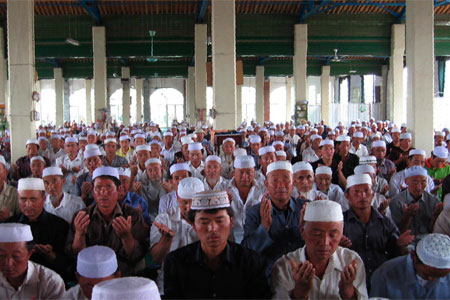
Harmony
Islam began in an Arab region. On the surface, it seemed to be at complete odds with Chinese traditions and Confucianism, which at the time was the official religion of China. The ancient Chinese people saw their civilisation as the epitome of human development, and had Islam been presented as an alien faith, they would have rejected it completely and seen it as unworthy, with no place in their world. Islam in China would have become isolated, and perhaps as fleeting as Christianity was.
“But this was unacceptable,” says the Imam of the Grand Mosque of Xian, the first mosque to be built in China almost 1,400 years ago. Sitting in front of him, trying not to gawp at the incredible architecture surrounding me, I ask him why. “Chinese Muslims love their country and its people. We are Chinese. We cannot not be part of China. There is even a hadith that says, ‘Love of your country is part of faith.’”
The Hui scholars therefore searched to find the common ground between Islam and the main faiths of China: Confucianism, Daoism (Taoism), and Buddhism. They became experts in Islamic and Chinese texts, traditions and practices, and without their efforts Chinese Muslim culture would have remained alien and foreign, isolated and far removed from the community.
In Western discourse, Dr. Umar Abd-Allah of the Nawawi Foundation tells me, many scholars argue that in order to integrate into the country, Chinese Islam Sinicised, which means orthodox Islamic faith and practice was made Chinese. The most evident example of how Chinese Muslims created their own unique forms of cultural expressions are their mosques, of which 45,000 exist in China. Stunningly beautiful, the mosques are quintessentially both Chinese and Muslim. My first sight of a Chinese mosque literally took my breath away. On the outside, they are built in traditional Chinese style, with pagoda-like roofs, Chinese calligraphy and Chinese archways. On the inside, however the Islamic influences are crystal clear: beautiful Chinese Arabic calligraphy, an octagonal minaret, a mihrab, a Chinese Imam lecturing in Mandarin and making supplication in perfect Arabic.
Examples of the fusion of Chinese and Islamic traditions are everywhere. In Xian, where an estimated 90,000 Muslims live, whilst wandering through a noisy souvenir market I came across traditional wall hangings with Arabic hadith written in calligraphy; porcelain tea sets with Qur’anic verses inscribed on them; popular red amulets with an attribute of Allah at the center rather than the traditional Chinese zodiac animal; rosaries with a name of Allah printed on each bead in Chinese characters; Qur’ans printed in both Chinese and Arabic.
When it comes to language, rather than transliterate Arabic terms into words that might be mispronounced and misunderstood – since the Chinese writing system is not phonetic – the early Hui scholars decided to choose words that best reflected the meaning of the Arabic terms, and at the same time were meaningful in Chinese tradition. Their purpose in doing this was twofold: they showed the Chinese community that they respected, believed and honoured the Chinese tradition, and that Islamic concepts, which in Arabic might have seemed inconceivable, were not only relatable, but similar. The Qur’an, for example, was referred to as the Classic: the sacred books of China were called the Classics, and as such the Qur’an was psychologically put in the same category. Islam was translated as Qing Zhen Jiao, “The religion of the Pure and the Real”. At the great Mosque of Xian, Chinese characters proclaim, “May the religion of the Pure and the Real spread wisdom throughout the land.”
Haroun Khanmir, a 24-year-old Islamic Studies student at the Xiguian mosque in Lingxia, has studied Arabic for four years. “Being fluent in Chinese and Arabic allows me to appreciate the brilliance of the terms chosen. They have so many nuances that instantly explain the true essence of Islam using main Chinese values.”
When comparing Islamic and Chinese traditions, the Hui scholars searched for common ground, coming up with five main principles that both traditions shared. And although they were clear about where Islamic belief deviated from Chinese thought, they did not set out to reject Chinese tradition and prove why it was wrong. Instead, they showed how Islam added to it. By not painting Islamic and Chinese tradition in binary opposition where belief in the former meant rejection of the latter, they avoided distressing Muslims who were very much Chinese.
“I consider myself 100% Chinese,” says a smiling 18 year old Ahmed Dong, dressed in a white thobe and turban. “And I don’t see why, even with different politics and languages and beliefs, we can’t be so; we share the same language, customs, and culture. Our country is so diverse, and yet unity is a value we all wish to have, rather than living separately.” One of the hundreds of students at the Xiguian mosque who come from a number of different ethnic backgrounds and study Qur’an, hadith, Arabic, English, as well as computer skills, Dong hopes to continue his studies in an Arabic country, and then come back and do da’wa in China, raising awareness of Islam.
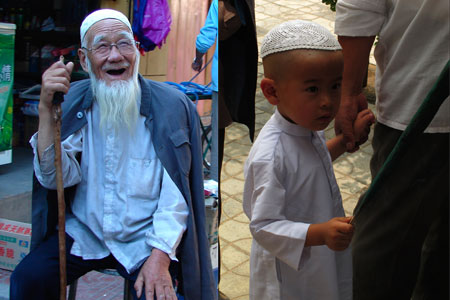
Today
Thirty four years after the Cultural Revolution, Muslims – and indeed, followers of other religions – are in a much better position. Islamic associations, schools and colleges are being created, mosques are being built, and there is a small but visible Islamic revival. After years of repression, Chinese Muslims are flourishing, organising inter-ethnic activities amongst themselves and international activities with Muslims abroad.
China’s one-child policy applies to the Hui, even though minority groups are allowed to have two or even three children, simply because the Hui’s numbers are so substantial. The majority of the other Chinese Muslim minority groups, however, are allowed to have two children, and Chinese Muslim numbers are increasing. “There is also a very small number of converts,” says the Imam of the Xiguian mosque after a heartfelt du’a under the shade of a 500 year old tree, the only original thing left in the mosque complex which was destroyed during the Cultural Revolution. “But what is more interesting is that many people who would not admit to being Muslims before out of fear of harming their livelihoods, like doctors, are now openly saying they are Muslims.”
Depending on the city you are in, the practice of Islam is different. In rural areas such as Little Mecca, where Muslims make up almost 60% of the population, Islam is evident in the number of mosques, halal restaurants and women in headscarves. It felt wonderful and yet so strange to walk and hear a dozen assalamu alaikums; to hear the adhan. In cosmopolitan cities like Beijing, however, as in every country of the world, globalisation and consumerism affects spirituality. Abdul Rahman Haroun, Imam of the 300-year old Nan Dou Mosque, one of Beijing’s 72 mosques, elaborates: “Here in the big cities Muslims have to conform to the dress code. Women do not wear headscarves because they are inconvenient and would be incomprehensible. In the southwestern parts of China it is different.” Deea’ El Din, Imam at the 85 year old mosque in Shanghai smiles when I tell him I am from Egypt, and says that the years he spent at Al-Azhar university in Cairo were some of the best in his life. “Unfortunately, the environment here is not conducive to being religious, and most mosque-goers are older men and women.” He excuses himself to call the adhan for maghrib, and leads us in prayers; there were only half a dozen Chinese worshippers.
Muslim minorities around the world have much to learn from the experience of the Hui in China, even though many Muslim minorities today in the West have a millennium long history of contributing to their country. By delving deep into the heart of Islamic beliefs and becoming just as knowledgeable of Chinese beliefs, the Hui scholars found common ground with faiths and traditions that on the surface seemed very different to Islam – but they found the human values that bind us.
The Islamic scholars of today have to do the same with Western traditions, which are much more similar to Islam than Chinese traditions: they share the same Abrahamic values and beliefs, and the two civilisations have histories that were often intertwined.
There are 10 Muslim minority groups in China, but never in the history of the world has there ever been such an ethnically diverse group of Muslims in non-Muslim countries as there are in the world today. From the example of China we learn the importance of cross-cultural communication.
The Hui experience also demonstrates that it is very possible that Muslims can live in harmony with very different civilisations, and at the same time create a viable and unique indigenous culture. The fusion of things Chinese and Islamic is unparalleled, whether it is in thought or cultural expression. By expressing their spirituality through architecture, works of literature, calligraphy and more, the Hui demonstrate to all minority Muslim groups that creating an authentic and genuine culture that is both Muslim and indigenous is not only possible, but beautiful. My fondest memory of the entire trip is reading Qur’an in a Chinese mosque, only to have an old Chinese woman, dressed all in white sit next to me, smile hugely and point at the Qur’an. I look at her askance, and she starts pointing to the letters and at me. I start reading from surah Ya Sin and she reads with me. And for the next fifteen minutes we read together. Islam is truly a universal religion.
Related Articles for thie China Special Issue –
Flowing Serenity – The Chinese Garden
Sacred Houses of Worship – The Great Mosques of China
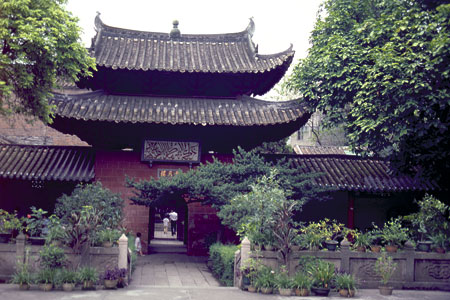
A Taste of the Orient – Chinese Food Ideas
Far Out & Far East – Chinese Inspired Fashion
The Land of Wonders – Traveling around China
Editorial by Sarah Joseph – The Religion of the Pure and True
A Suffering Territory – Ethical feature on Dawn Foundation
Post Disclaimer | Support Us
Support Us
The sailanmuslim.com web site entirely supported by individual donors and well wishers. If you regularly visit this site and wish to show your appreciation, or if you wish to see further development of sailanmuslim.com, please donate us
IMPORTANT : All content hosted on sailanmuslim.com is solely for non-commercial purposes and with the permission of original copyright holders. Any other use of the hosted content, such as for financial gain, requires express approval from the copyright owners.
 Sri lanka Muslims Web Portal Diversity and Inclusiveness – Sri Lanka Muslims
Sri lanka Muslims Web Portal Diversity and Inclusiveness – Sri Lanka Muslims
